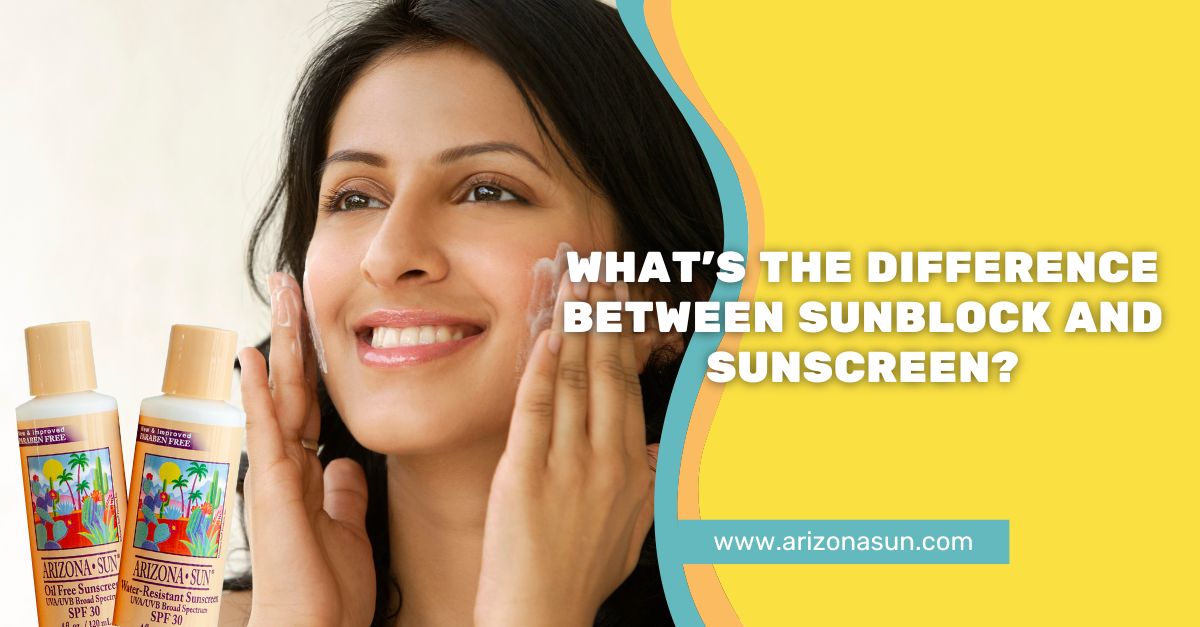
The sun radiates life-giving energy, but it also comes with harmful UVA and UVB rays that can cause serious damage to our skin. To protect ourselves, we often turn to sun protection products such as sunblock and sunscreen.
Although these terms are frequently used interchangeably, they actually have some noted differences. To understand how they work, it helps to become acquainted with the nature of the sun’s UVA and UVB rays.
Understanding UVA and UVB Radiation
Before diving into the differences between sunblock products and sunscreen protection, it's essential to have a basic understanding of the types of ultraviolet radiation emitted by the sun. UVA rays account for 95% of the UVB radiation that reaches the ground.
These rays absorb deep into our skin layers, causing premature aging, wrinkles, or potentially skin cancer after ongoing exposure.
UVB rays make up a much smaller percentage of the solar radiation that hits the planet’s surface, but are more intense, resulting in sunburns and reddening of the skin.
While UVA radiation is associated with skin aging, UVB radiation is connected with sunburns.
Sunblock Products
As its name implies, sunblock creates a physical barrier between your skin and the sun’s harmful UVA and UVB light. It accomplishes this by using active ingredients such as zinc oxide or titanium dioxide to reflect or scatter sunlight away from the skin's surface.
Because these minerals don't allow UV rays to penetrate your skin, you’re protected from both UVA and UVB beams of light.
Pros of Sunblock:
- Offers broad-spectrum protection against both UVA and UVB radiation
- Less likely to cause allergies or irritations
- Can be effective as soon as applied
Cons of Sunblock:
- May leave a white cast on some skin types
- Can feel heavy or greasy on the skin
- Not recommended for water-based activities due to reduced water resistance
Sunscreen
Contrary to sunblock's physical barrier, sunscreen contains organic chemical compounds that absorb UV radiation and convert it into a minimal amount of heat. The heat is then released from the skin.
Common ingredients in sunscreens include avobenzone, oxybenzone, and octinoxate. Sunscreens often provide protection against either UVA or UVB radiation; however, many formulations today offer broad-spectrum coverage to shield against both types of radiation.
Pros of Sunscreen:
- Absorbs easily into the skin for a virtually invisible appearance
- Lightweight and suitable for daily use under makeup
- Can provide water-resistant protection for swimming and outdoor sports
Cons of Sunscreen:
- Takes about 15-30 minutes to become effective after application
- Requires reapplication more frequently than sunblock
- May cause irritations or allergies in some people
Making the Right Choice
When selecting the best sun protection for your needs, consider factors such as your skin type, sensitivity, exposure duration, and the specific activities you'll engage in while wearing the product.
If you have sensitive skin or prefer instant protection, opt for a sunblock with physical barriers that prevent UV rays from penetrating your skin. Alternatively, if you are looking for a lightweight solution that blends seamlessly into your skincare routine, sunscreen, with its protective formulation, is an excellent choice.
Ultimately, both sunblock and sunscreen are essential allies in our ongoing battle against harmful UVA and UVB radiation. Choose a sunscreen or from one of the featured sunblock products that work the best for you. Always apply the product liberally to ensure you're fully covered and protected from the sun's damaging effects.

Visit the Arizona Sun Website Now
To ensure you’re fully protected from the sun’s rays, visit the Arizona Sun website to review sun care products online today - tanning oils and sun protection that is both effective and affordable.

